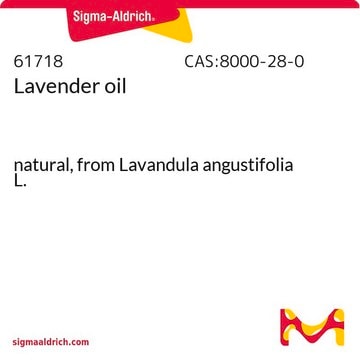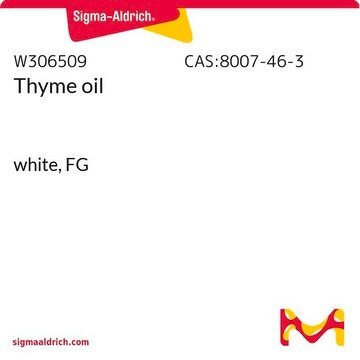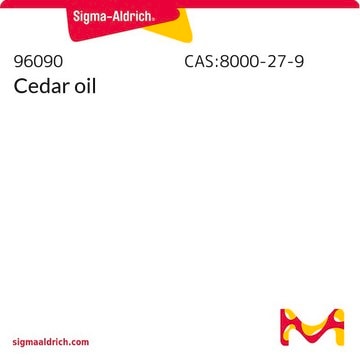77411
Peppermint oil
natural, from Mentha piperita L.
Synonym(s):
Mentha piperita
About This Item
Recommended Products
biological source
Mentha piperita L.
form
oil
quality
natural
refractive index
n20/D 1.46
n20/D 1.461 (lit.)
bp
215 °C (lit.)
density
0.898 g/mL at 25 °C (lit.)
storage temp.
2-8°C
Looking for similar products? Visit Product Comparison Guide
Other Notes
Subscribe to our Newsletter to keep up to date on our latest Flavors and Fragrances offerings.
Signal Word
Warning
Hazard Statements
Precautionary Statements
Hazard Classifications
Aquatic Chronic 2 - Skin Irrit. 2 - Skin Sens. 1
Storage Class Code
10 - Combustible liquids
WGK
WGK 1
Flash Point(F)
150.8 °F - closed cup
Flash Point(C)
66 °C - closed cup
Personal Protective Equipment
Certificates of Analysis (COA)
Search for Certificates of Analysis (COA) by entering the products Lot/Batch Number. Lot and Batch Numbers can be found on a product’s label following the words ‘Lot’ or ‘Batch’.
Already Own This Product?
Find documentation for the products that you have recently purchased in the Document Library.
Our team of scientists has experience in all areas of research including Life Science, Material Science, Chemical Synthesis, Chromatography, Analytical and many others.
Contact Technical Service







